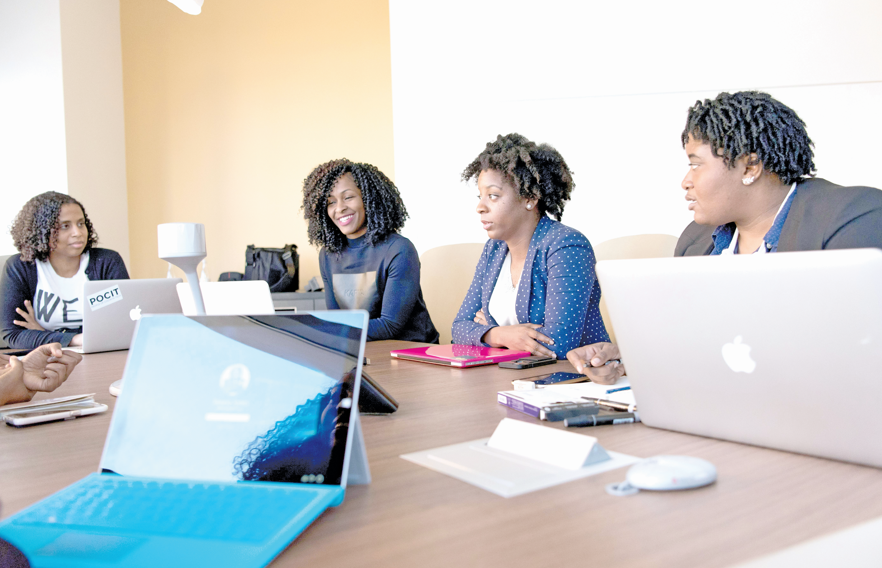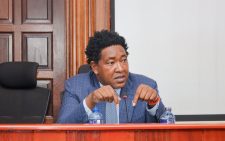Challenging gender stereotypes to promote inclusion at workplace

In a world facing multiple crises putting immense pressure on communities, ensuring women’s and girls’ inclusion across all aspects of life is one of the ways to secure prosperous and just economies, and a healthy planet for future generations.
International Women’s Day (IWD), which takes place yearly on March 8, presents an opportunity to celebrate females worldwide and reflect on progress and diversity gains made while resetting objectives across recruitment, retention, and advancement for women.
The theme for this year is Inspire Inclusion and it underscores the importance of creating an inclusive society where women are valued, respected, and empowered to participate fully in all aspects of life. In addition, it calls for action to break down barriers, challenge stereotypes as well as create environments that value and respect women.
Helping women fly
Eng Liz Aluvanze Chief Executive Officer, Kenya Association of Air Operators understands too well the gender imbalance in technical roles within the aviation industry, particularly those requiring Science, Technology, Engineering, and Mathematics (STEM) and those that requires a multifaceted approach.
However, Liz, an aeronautical engineer by profession believes that some of the actions that can be taken to address imbalance include education and outreach programmes, which target young girls in schools, introducing them to STEM subjects and showcasing the exciting opportunities within aviation.
“There is need to collaborate with industry partners and foster partnerships between educational institutions, non-profit organisations to create mentorship programmes and hands-on STEM experiences for girls. We need to foster scholarship opportunities as this will help provide financial support to young women pursuing STEM education, reducing financial barriers that may discourage those with aspirations in aviation-related fields,” she explains.
“We can address the gender gap from its roots and empower more women to join the industry. In aviation, organisations such as Girls In Aviation Africa (GIAA), Young Aviators Club of Africa (YACA), Women in Aviation International (WAI) have made some efforts in this respect through community outreaches, AVI-STEM camps, and scholarships,” she adds.
Mentorship is a conversation that Liz holds dear. She is mentoring five young women in the aviation industry.
“I continue to take up several young women into my secretariat where we train them. As an association, there is a commitment by several member airlines to employ more women particularly in leadership roles; this will be tracked and analysed at the end of every financial year,” she says.
Being a young woman in a leadership position comes with several challenges, especially in an industry where traditional gender biases persist. “As the journey has unfolded, the unwavering support of the Board of Directors and stakeholders to my vision and goals, along with the establishment of a network of mentors and allies, has been pivotal. Embracing continuous learning has been integral while also embracing and learning from the challenges that come with the role,” she says.
Gender parity also persists in the conservation world. However, Susie Weeks, Executive Director of Mount Kenya Trust has observed that there are more women coming in to bridge the gap.
She says that some of the challenges that women breaking through the conservation industry face are the fact that some people still place no value in the field of conservation. “Even with the stark evidence of climate change and catastrophic global repercussions, it’s still sad that the society doesn’t value this field, which makes breaking even one of the biggest barriers,” she adds.
Supporting Mother Nature
Another challenge is that historically, the salaries in the sector are not competitive and most conservationists start out working voluntarily, which is a difficult place to start a career.
“Professional women might end up in different careers because of the need to make ends meet. I hope there are more and more women, particularly more indigenous Kenyan women who will stand by their passion for Mother Nature because it’s what supports us all. I think that women’s empathy helps us to see conservation as a calling that demands change from all sectors. We think about what future generations should expect from their Government, from industry players and sustainably planned development,” says Susie.
Even as more women take up roles that were historically men’s, such as tour guiding, chefs or even managers, more still needs to be done to ensure inclusion as gender stereotypes persist in developing countries, where women are considered unsuitable for a variety of occupations.
Need for targeted policies
“Women’s participation in the tourism industry holds immense significance for many reasons, most notably economic empowerment,” Jane Adams, National Chair of Kenya Association of Women in Tourism (KAWT) says.
She adds,“However, the realisation of these benefits hinges upon the implementation of targeted policies by local and national governments — policies designed to address and uplift women, and create a more equitable and inclusive industry. KAWT is committed to advocating for such policies, recognising the transformative impact they can have on women’s economic well-being and their position within the industry.”
Changing mindset
In agricultural research, a notable gender gap persists, particularly within the crop breeding sector. While women have often been well-represented in breeding labs and offices, they’ve been less present in field research work. In Kenya, the disparity in this sector is often rooted in cultural norms and community values. This can be seen in plant breeding stations, where tasks such as mechanisation, field and outstation trial management are disproportionately led by men.
Consortium of International Agricultural Research Centres (CGIAR) has been actively working to balance technical teams in all fields in Kenya. They’ve done this by ensuring diverse hiring panels, considering female candidates alongside males and being vocal, to change mindset and send a strong message of inclusivity.
“At International Maize and Wheat Improvement Center (CIMMYT) research station hosted by Kenya Agricultural and Livestock Research Organisation (KALRO) in Kiboko, where several partner institutions conduct research activities on crop breeding and seed systems, we approached all women working there and asked if they wanted to learn how to drive a tractor — a task usually reserved for men,” explains Aparna Das, Senior Technical Programme Manager for Global Maize Programme at CIMMYT, a CGIAR research centre.
“To our surprise, and this really shows our own bias, many women expressed interest, prompting us to implement a training programme to teach them tractor driving,” Das continued.
“Often, in our field, opportunities are missed simply because of stereotypes, and because no one thought of asking. By involving women in decision-making, rather than deciding on their behalf, we can create supporting work environments. All these women expressed a desire to learn. Since then, we never assume a person’s gender dictates their preferences for a task – rather, we ask and give the individual the opportunity to decide,” she says.
Infrastructure matters too. Projects funded by Crops to End Hunger, such as the renovation of the Kenya Plant Health Inspectorate Service (KEPHIS) germplasm exchange facility done in collaboration with CGIAR Centres International Institute of Tropical Agriculture (IITA) and International Potato Center (CIP), along with similar initiatives at stations in Kakamega and Njoro, invest in women’s needs.
“We prioritise accessibility at the design stage. This means, for example, ensuring restroom facilities for women and men in compliance with legal requirements. Having these amenities ensures women can take breaks and address needs such as breastfeeding. When procuring equipment such as planters for example, we also consider usability for all individuals,” explains Gustavo Teixeira, Mechanisation Specialist and project coordinator for CGIAR Breeding Resources Initiative.
Fostering gender equality requires harnessing everyone’s skills and investing in their success.












